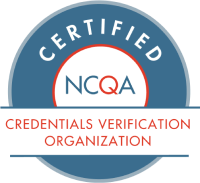Launching a provider network is a complex process requiring the coordination of multiple teams and countless data points. Even for experienced healthcare organizations, the work it takes to establish or expand a plan is almost too much to handle alone, especially without the proper tools.
Having worked in the healthcare industry for years and collaborated on the launch of dozens of regional and national plans, we at andros have seen it all. In this article, we’re going to break down five of the key mistakes healthcare organizations make in their provider network development strategies, and what changes can be instituted to ensure that your provider network is complete, compliant, and cost-effective.
#1. Failing to Adapt a Plan Because of Incomplete Market Assessment
One common mistake we see healthcare organizations make happens in the early phases of the network development process. An organization can become singularly focused on launching a certain type of health plan product in a specific market while failing to see red flags that could threaten the network’s market viability.
A factor that contributes to this common mistake is not fully understanding the provider landscape where the provider network is set to be launched. Identifying a hole in a market is easy; if there isn’t a product servicing a region, it stands to reason that launching a specific type of provider network there could be successful. However, without adequate analysis and modeling, a healthcare organization could be dooming a provider network to failure.
Bringing in a trusted partner like andros during the market assessment phase can give a healthcare organization a clear picture of a network’s chances of success. Through the experience of building many types of networks across the country, a trusted partner can deploy advanced modeling scenarios, analyzing what the competitor landscape looks like, as well as which rates will attract the most desirable providers. By enlisting a company like andros, a healthcare organization can more accurately determine where a provider network should, and more importantly shouldn’t, be launched, or making necessary adjustments to the build strategy to better position a network for success.
#2. Leaving Teams Disconnected From One Another
To launch a provider network successfully, it requires the efforts of multiple teams working towards the same unified goal; it also requires that those teams have access to the same source of information. Working from an interdisciplinary platform keeps teams in close collaboration, clearly defining roles and tasks so everyone is on the same page, and streamlining operations to ensure that work is being done on schedule and avoiding redundancy. When working with a company like andros, we’ll deploy a tool like androsCompass* which can provide a more organized recruiting, contracting, and data management experience through real-time project status reporting, custom dashboards, and additional project management tools that keep team members on task and informed.
androsCompass* also increases accountability by providing a means to monitor provider outreach and creating an audit trail of individual document records and team member actions. These audit trails help identify problem points that could spell threats to adequacy which can in turn jeopardize launch.
#3. Not Including Credentialing in Your Build Strategy
Another mistake we see is that healthcare organizations will work hard towards building a provider network that’s adequate and aligned, but stop pushing at that point.
The truth is, a provider network requires constant tending from before launch through the months and years after it goes live; and before that happens, providers need to be credentialed. By planning for and building the credentialing process into the network development process early, healthcare organizations can take the manual burden off their teams, streamline processes and reduce overhead. androsCredentialing* can be integrated into the build strategy, offering market-best speeds in turnaround, as well as instant alerts flagging potential roadblocks such as malpractice, licensure or sanctions, while proactively working to correct any issues. It also builds in the extra assurance that your organization will be able to manage the extra volume of credentialing in a short period of time that often happens when you expand existing networks.
#4. Thinking Your Work is Done Once a Network is Launched
While including credentialing within the provider network development strategy is essential, it can also be a mistake to think that work on a network is done once it’s successfully launched. A provider network needs to be maintained, specifically with respect to adequacy and credentialing.
After a provider network is launched, it can be easy for a healthcare organization to see the plan as a whole, without recognizing the circumstances of individual providers within that network. Providers retire. Providers’ credentialing expires. A provider network is an ever-evolving entity, and a healthcare organization needs to be mindful of that fact. By failing to monitor the individual circumstances of providers, threats to a network’s adequacy can fly under the radar. By keeping a close eye on provider status, particularly through a unified platform like androsCompass*, healthcare organizations can help ensure that a network is maintaining adequacy and compliance for the life of the plan.
#5. Waiting Until It’s Too Late to Take Action
Launching a provider network can’t be done overnight; it’s a months long effort that relies on hitting key milestones and filing deadlines. Unfortunately, one common mistake we see healthcare organizations make is ignoring when their network launch is in trouble and powering through anyway. The truth is, at any point in your launch strategy, it’s never too late to admit needing help and taking action to get that help.
By bringing in a trusted partner like andros at the first sign of trouble, not only can your provider network development strategy be adapted to keep the project on pace and your network given the best chance to achieve adequacy and marketability, but we can scale quickly to help you supplement internal teams with experts in the market that can keep your team members from burning out. Falling behind in your build strategy can be like quicksand, and before you know it, you’re in over your head. Taking action early can save your network as well as a lot of headaches for your team.
Wrapping It All Up
Launching a provider network takes a village. It needs rigorous forethought and constant communication and collaboration among multiple teams. We at andros recognize when healthcare organizations are making mistakes in their provider network development strategies, because we’ve been around long enough to know how many hurdles need to be cleared to successfully launch a new provider network . If we have one tip to remedy all of these mistakes, it would be bringing on an end-to-end partner like andros early. We’ll help you avoid these crucial pitfalls and work to get your network on the straightest path to adequacy and marketability.



